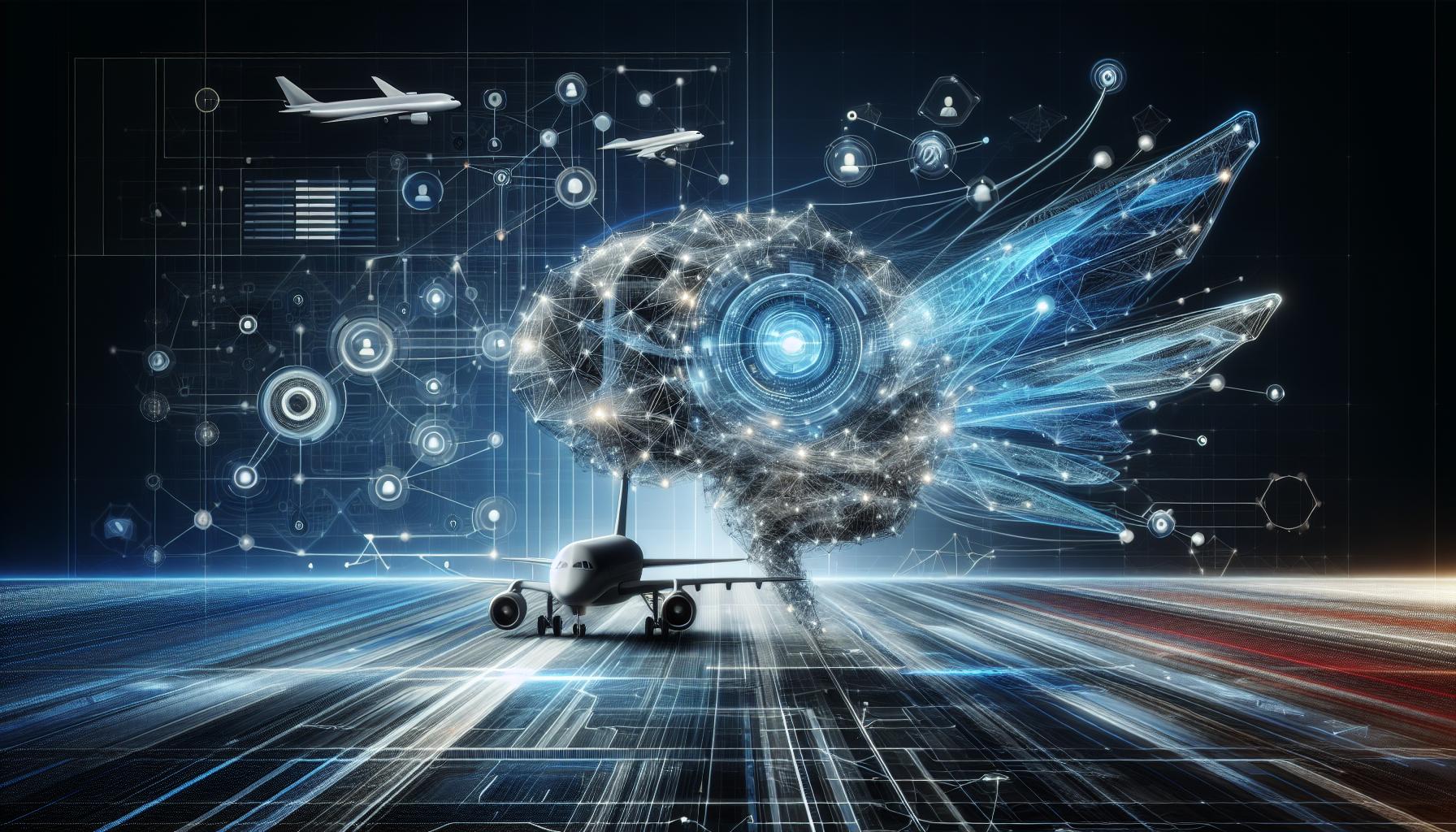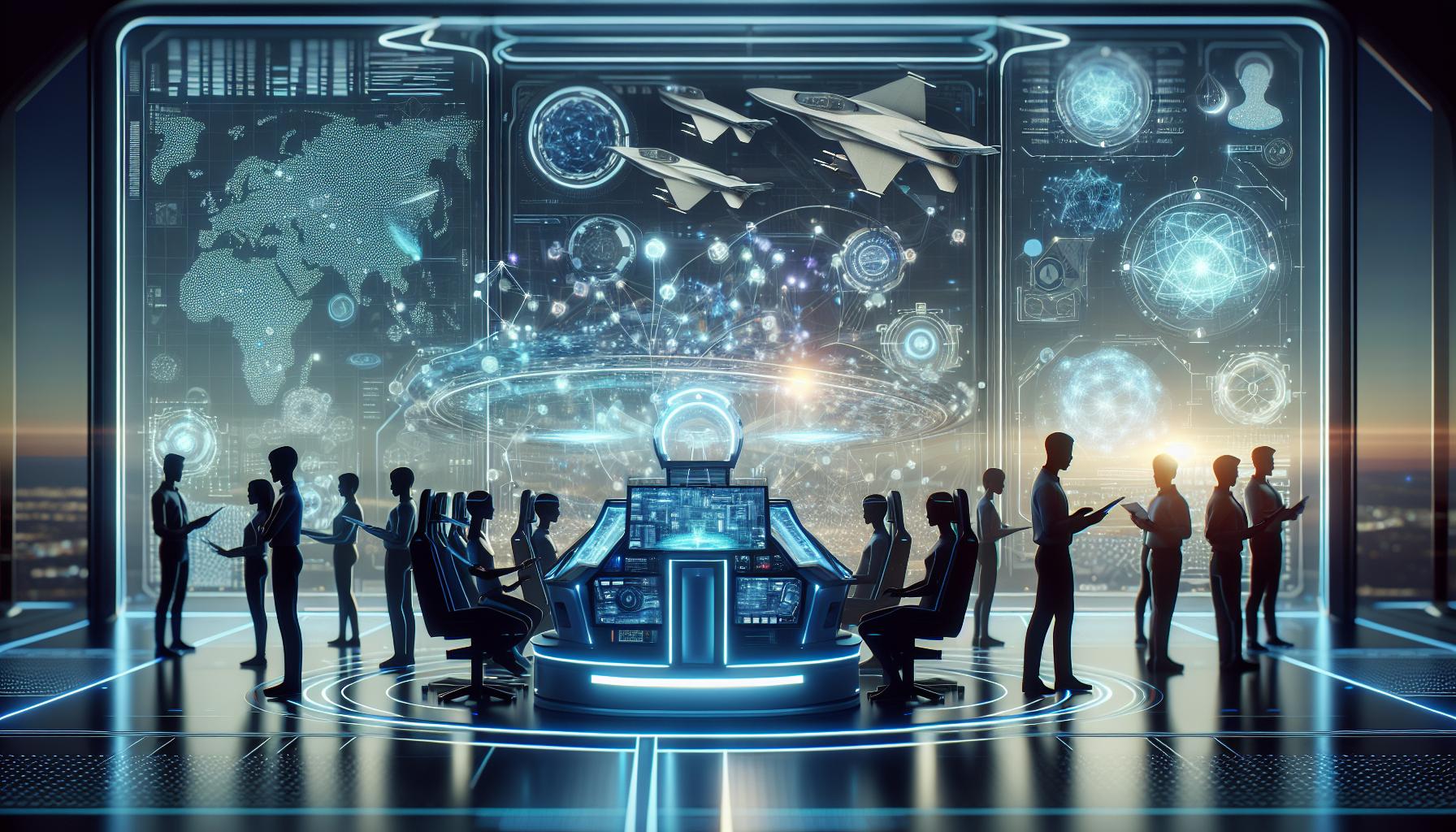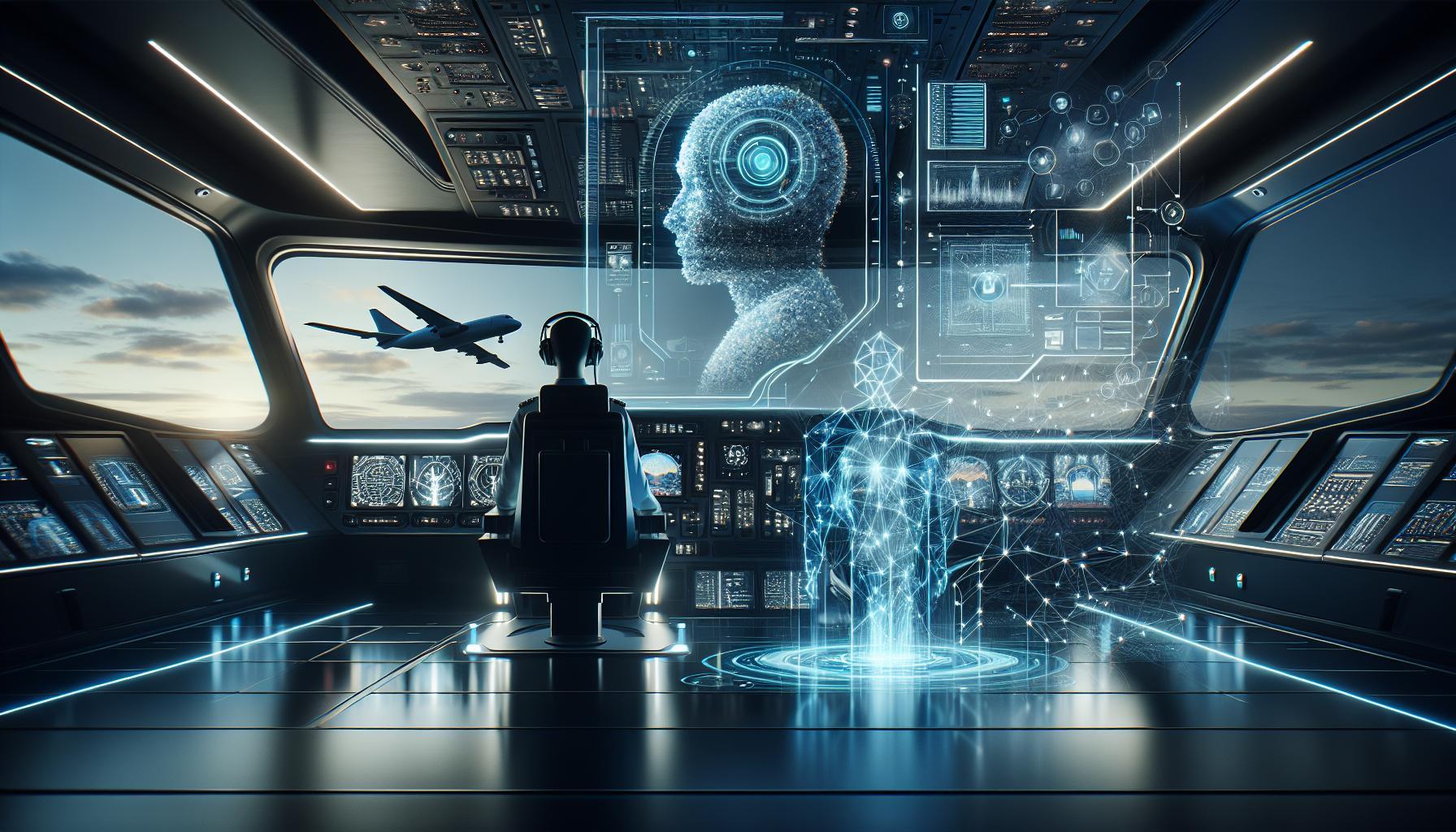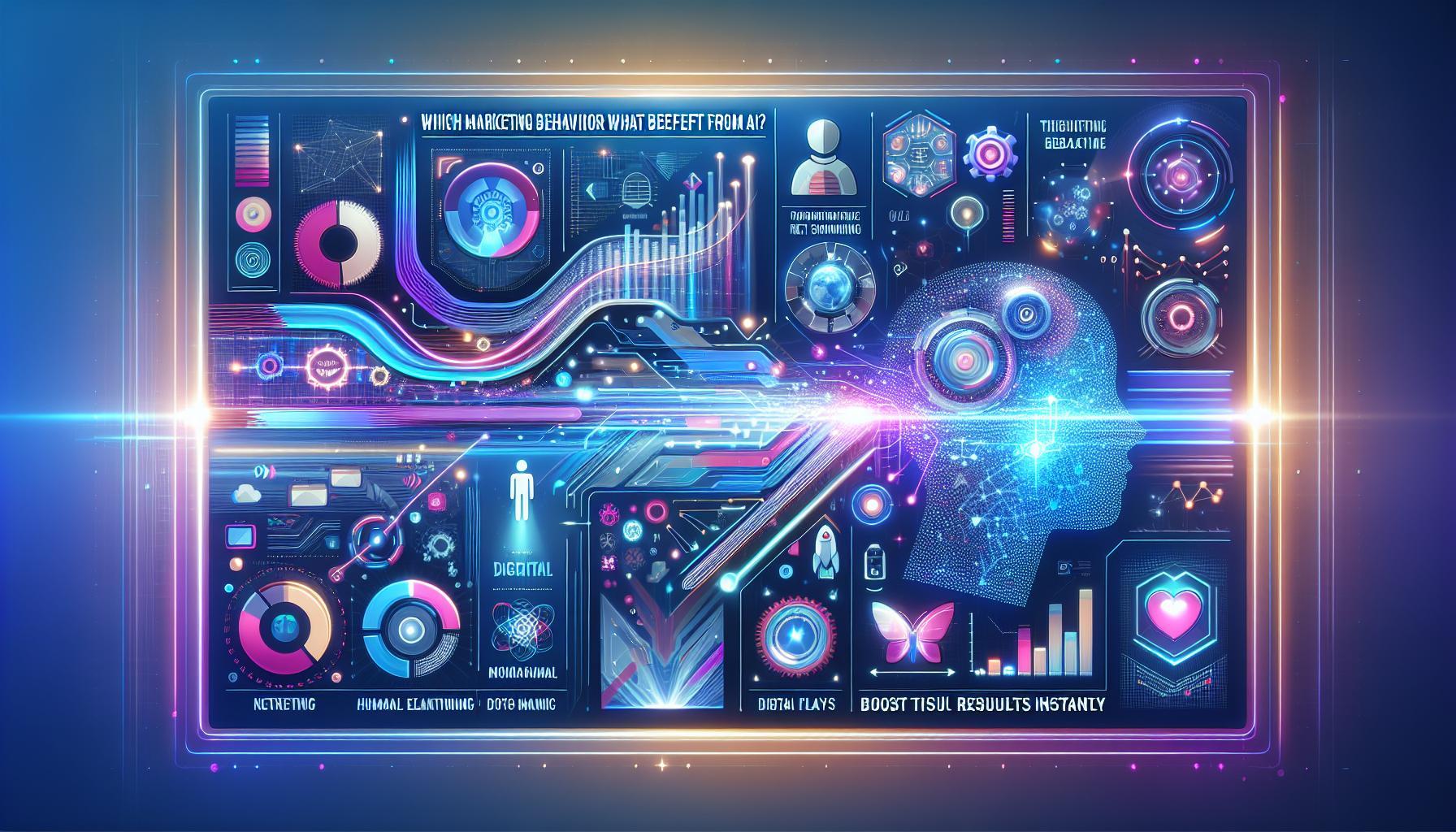As artificial intelligence revolutionizes various industries, the aviation sector stands at a crossroads, questioning the role of human pilots in an increasingly automated world. Understanding how AI will complement rather than replace pilots is vital, highlighting a future where collaboration between man and machine enhances safety and efficiency in the skies.
Understanding AI’s Role in Aviation
The integration of artificial intelligence in aviation is transforming the industry at an unprecedented pace. With advancements in machine learning and data analytics, AI is not just a supporting tool but is becoming an integral component of aviation operations. As airlines and manufacturers explore the potential of AI, many questions arise regarding the future role of pilots and the automation of flight operations.
Enhancing Decision Making and Safety
AI can significantly enhance decision-making processes in the cockpit by analyzing vast amounts of data in real-time. Predictive maintenance is one prominent application where algorithms analyze data from aircraft sensors to anticipate maintenance needs before issues arise, thereby increasing safety and reliability[[2]](https://www.forbes.com/sites/neilsahota/2024/03/29/navigating-the-skies-with-ai-how-airlines-are-transforming-air-travel/). Furthermore, AI can aid pilots during critical flight phases through intelligent flight management systems that suggest optimal flight paths, manage fuel consumption, and even handle routine tasks, allowing pilots to focus on more complex operational considerations.
- Real-Time Data Processing: AI systems can process and analyze real-time data from various sources, such as weather conditions and air traffic, to make informed decisions.
- Safety Monitoring: By monitoring flight parameters continuously, AI can detect anomalies and alert pilots before potential emergencies occur.
- Operational Efficiency: AI can optimize flight schedules and route planning, leading to reduced delays and lower operational costs.
The Question of Automation
The ongoing discourse surrounding whether pilots will be replaced by AI centers on the evolution of automation. While AI’s capabilities in automating certain functions are evolving, the complete replacement of pilots is unlikely in the near future. Human judgment, especially in emergency situations, remains irreplaceable. Aviation experts suggest that AI will continue to complement human skills rather than outright replace them. This collaboration between AI and pilots may redefine the pilot’s role, focusing more on supervisory and decision-making capabilities while allowing AI to manage routine tasks and data analysis.
Future Prospects
Looking forward, AI is expected to usher in a new era of aviation where safety, efficiency, and passenger experience are prioritized. Innovations in AI technology may lead to semi-autonomous aircraft in the coming decades, similar to trends in the automotive industry. For instance, companies are already experimenting with AI-driven flight systems, which, while still requiring human oversight, signal a major shift towards greater automation. Airlines are likely to invest heavily in AI technologies that improve operational efficiency, enhance customer experience, and maintain safety standards.
| AI Application | Benefit |
|---|---|
| Predictive Maintenance | Reduces unexpected breakdowns and enhances safety |
| Flight Management Systems | Improves efficiency and fuel conservation |
| Real-time Decision Support | Enhances situational awareness and response times |
Overall, as the aviation industry continues to embrace AI technologies, the collaboration between humans and machines is likely to propel the sector into a new frontier, balancing automation with the irreplaceable human touch necessary for high-stakes environments.
The Current State of Automation in Flight Operations
In the fast-evolving world of aviation, automation has transcended basic functions, shifting from ground control to the skies with remarkable efficiency and safety. Modern aircraft are now equipped with sophisticated technology that enhances operational capabilities, significantly reducing the need for human intervention in various flight operations. This transformation raises an intriguing question: As we observe automation increasingly integrated into aviation, will pilots be replaced by AI?
is characterized by several cutting-edge applications of artificial intelligence and machine learning. These technologies are improving efficiencies in areas such as predictive maintenance, which anticipates potential mechanical issues before they arise, thereby ensuring aircraft remain operationally viable. AI-driven systems are already optimizing flight paths and reducing fuel consumption through algorithms that analyze countless variables in real-time. For example, systems like BADA Flight Plan utilize reinforcement learning to adapt trajectories that minimize conflicts and delays in air traffic management, showcasing how AI can dynamically enhance operational processes [1].
Moreover, automation is playing a pivotal role in safety and navigation. Advanced systems are providing integrated traffic, terrain, and weather prediction, enabling pilots to make informed decisions swiftly. The integration of AI copilots is becoming a reality, where these intelligent systems assist pilots in real-time with tasks and offer critical information without overwhelming them. This evolution not only increases the safety and efficiency of operations but also allows pilots to focus on more complex decision-making aspects during flights [3].
The journey into a more automated aviation landscape promises several benefits, including reduced costs and enhanced safety. Yet, it also raises the stakes for pilot training and skill acquisition. As technology continues to advance, there is a crucial need for pilots to evolve alongside these advancements. The future may see pilots transitioning from primary decision-makers to supervisors of automated systems, requiring them to develop an understanding of sophisticated AI tools and their implications on flight safety and operations. As the industry progresses, embracing these changes while highlighting the irreplaceable human element in critical decision-making will be essential for maintaining a balanced approach to automation in aviation.
Can AI Enhance Pilot Decision-Making?
Artificial Intelligence is transforming aviation, and its potential to enhance pilot decision-making is one of the most exciting prospects in the industry. As pilots navigate increasingly complex flight environments, AI tools can help lighten the mental load, allowing them to focus on critical aspects of flight operations. By analyzing vast amounts of data in real-time, AI can provide invaluable support in decision-making, thereby improving safety and efficiency in the cockpit.
How AI Supports Decision-Making
AI applications in aviation are designed to work as collaborative partners with human pilots, rather than replacements. For example, systems like Air-Guardian developed at MIT utilize advanced eye-tracking technology to monitor pilot attention and assist in managing situational awareness. This creates a symbiotic relationship, where AI aids pilots in making informed decisions rather than simply executing tasks autonomously [[2]](https://www.captechu.edu/blog/how-ai-can-improve-aviation-safety).
Moreover, AI enhances preflight planning by analyzing large datasets that include current weather conditions, flight paths, and historical data. This sophisticated analysis produces actionable insights that pilots can leverage to make better-informed choices, especially when dealing with unexpected in-flight challenges[[[3]](https://www.aviatortips.com/the-rise-of-ai-in-aviation-what-pilots-need-to-know/). For instance, AI systems can identify potential risks related to turbulence or unfavorable weather, alerting pilots to adjust their flight plans accordingly.
Real-World Applications
As practical examples emerge, many companies are testing AI-driven technologies to further enhance pilot decision-making. Xwing and Reliable Robotics are pioneering cargo aircraft capable of flying without onboard pilots, heavily relying on AI to ensure safe navigation and decision-making[[[3]](https://www.aviatortips.com/the-rise-of-ai-in-aviation-what-pilots-need-to-know/). In general aviation, innovations like Garmin Autoland allow an aircraft to autonomously land in emergencies, demonstrating how AI can take over critical functions when a pilot is incapacitated.
This collective intelligence approach paves the way for a future where pilots can oversee AI systems, making adjustments and decisions in partnership rather than being solely responsible for every action. The collaboration of AI and human oversight stands not just to enhance decision-making but also to elevate safety standards across the aviation industry, promising a future where pilots and AI coalesce seamlessly in the cockpit.
Exploring Hybrid Cockpits: The Future of Man and Machine
In an age where technology plays a pivotal role in aviation, the emergence of hybrid cockpits symbolizes a transformative shift in how aircraft operate. These innovative flight decks are designed to balance automation with human expertise, creating a synergy that enhances safety and efficiency. As the aviation industry grapples with questions about the role of pilots in a future filled with artificial intelligence, hybrid cockpits present a compelling case for coexistence rather than replacement.
The concept of hybrid cockpits merges sophisticated automation systems with the irreplaceable judgment and experience of human pilots. Automation has advanced significantly, with sophisticated autopilot and auto-landing systems becoming integral to modern aviation safety. For instance, hybrid designs allow pilots to manage flights seamlessly while benefiting from real-time data analytics that support decision-making. This integration can reduce cognitive load and increase situational awareness, helping pilots focus on critical tasks, particularly in complex operational environments.
Benefits of Hybrid Cockpits
The advantages of implementing hybrid cockpit systems can be summarized as follows:
- Enhanced Safety: Advanced automation systems can provide critical monitoring of aircraft systems, reducing the risk of human error.
- Increased Efficiency: Hybrid cockpits can optimize fuel usage and perform real-time adjustments to flight plans based on weather conditions and air traffic.
- Operational Flexibility: These cockpits can be tailored for various missions, whether commercial or military, allowing for efficient operation in diverse scenarios.
Even leading companies are investing in this future. For example, Archer Aviation has begun developing hybrid-electric aircraft that will leverage autonomous systems alongside human pilots, thereby paving the way for a new era in both civilian and military aviation.
As the aviation landscape continues to evolve, understanding the dynamics between human pilots and AI-driven technology will be crucial. Hybrid cockpits may very well hold the key to blending the best of both worlds, ensuring that pilots remain vital in the cockpit while embracing the advancements brought by AI and automation. The ongoing developments in cockpit design and technology signify that rather than asking if pilots will be replaced by AI, it may be more pertinent to explore how they will work alongside it in a safer and more innovative future.
Training Tomorrow’s Pilots in an Automated World
Training the next generation of pilots in an increasingly automated environment requires a paradigm shift in aviation education. As artificial intelligence (AI) technologies advance, the role of pilots is evolving from traditional command-and-control to a more collaborative partnership with intelligent systems. Embedding AI into training programs not only prepares future pilots for the realities of a hybrid cockpit but also enhances their decision-making capabilities and operational safety.
One of the key aspects of integrating AI into pilot training is the emphasis on understanding and managing automated systems. Pilots must develop skills not only in flying but also in interpreting the data and insights generated by AI co-pilots. This involves:
- Simulation Training: Utilizes advanced simulators that incorporate AI scenarios, allowing pilots to practice real-world decision-making in a safe environment.
- Human-Machine Interface Knowledge: Training programs should focus on how pilots can effectively interact with AI systems, understanding how to leverage these tools without ceding control.
- Safety Management Systems: Emphasizing risk assessment and management, training should include how AI can elevate safety protocols and reduce operational errors, as seen in the MIT-developed Air-Guardian system, which augments pilot precision during critical flight moments [[2]](https://news.mit.edu/2023/ai-co-pilot-enhances-human-precision-safer-aviation-1003).
Additionally, the content of pilot training should include a deeper exploration of AI ethics and the implications of automation in aviation. Future pilots will need to navigate not only technical proficiency but also understand the legal and ethical dimensions of relying on AI in the cockpit. By fostering a mindset of continuous learning and adaptability, flight schools can arm new pilots with the tools to thrive in this transforming landscape, ensuring they remain indispensable partners to AI technologies rather than mere operators.
In this automated world, the focus on training must also encompass soft skills—such as communication, teamwork, and leadership—which are critical in an era where human oversight is essential to ensure that automation supports rather than hinders operational success. As highlighted in discussions around the future of aviation and automation, the objective is not to replace pilots but to enhance their effectiveness through collaboration with advanced technology[[[1]](https://inflightpilottraining.com/ai-and-future-pilots/). By creating a curriculum that advances both technical and interpersonal skills, the aviation industry can ensure that tomorrow’s pilots are well-prepared for the challenges and opportunities that lie ahead.
Predicting the Timeline for AI Integration in Cockpits
The aviation industry stands at a pivotal crossroads, with the evolution of artificial intelligence (AI) promising to reshape the roles of pilots dramatically. As technological advancements continue to unfold, becomes essential for stakeholders across the sector. A landmark report from the FAA outlines vital steps towards this integration, emphasizing a safety-oriented and incremental approach that will guide the future of cockpit automation.
The first major phase of integration involves initial adoption and testing of AI systems in lower-risk environments. This strategy allows operators to gather crucial data on the performance and reliability of AI technologies in real-world scenarios. For instance, deploying AI-assisted flight management systems can help pilots with routine functions, improving overall situational awareness without completely taking over vital tasks. Such gradual integration can gradually shift the perception of pilots’ roles from primary operators to supervisory overseers, managing complex AI interactions effectively.
Key Milestones in AI Integration
Identifying clear benchmarks is pivotal for successful AI implementation. Here are some potential milestones in the timeline for AI integration in cockpits:
- 2025-2027: Initial AI tools for supporting flight operations are expected to undergo rigorous testing, focusing on data analysis and decision-making aids for pilots.
- 2028-2030: Enhanced automation features will likely be adopted into commercial aircraft, including AI systems for real-time navigation and weather assessment.
- 2031-2035: By this stage, full-scale deployment and certification of AI in flight operations may begin, paving the way for AI-assisted autonomous flights in specific markets.
Challenges Ahead
Despite advancements, several challenges must be addressed before AI can be seamlessly integrated into cockpit operations. Key concerns include interoperability with existing systems, pilot training and certification requirements, and public perception of AI’s role in aviation safety. Achieving consensus on safety standards and fostering collaboration between industry stakeholders, as outlined by the FAA’s roadmap for AI in aviation, will be pivotal in ensuring a secure transition for both pilots and passengers alike.
The promise of AI’s role in aviation is not merely about replacing human pilots; rather, it is about augmenting their capabilities and enhancing flight safety. By approaching this transformation strategically and collaboratively, the aviation industry can navigate the complexities of AI integration, setting a course for a future where pilots and AI systems work in harmony to ensure safer skies.
Q&A
Will Pilots Be Replaced by AI? The Future of Aviation and Automation?
While AI is transforming aviation, pilots are unlikely to be fully replaced. Automation is enhancing pilots’ capabilities, making operations safer and more efficient rather than replacing the human element entirely.
AI can assist in routine tasks, analyze vast data, and improve decision-making, but human judgement remains critical, especially during emergencies or unpredictable situations. Current advancements aim to create a supportive role for AI.
How is AI currently used in aviation?
AI is used for flight planning, maintenance predictions, and passenger engagement. Airlines leverage AI to optimize schedules, enhance safety through predictive maintenance, and improve customer service via chatbots and personalized experiences.
These applications aid pilots and crew by providing tools that help manage operational efficiency, thereby allowing human teams to focus on higher-level decision-making.
What are the benefits of AI in aviation?
AI offers significant benefits in aviation, including increased safety and efficiency. By analyzing data patterns, AI helps predict maintenance needs and improve flight performance, thereby reducing delays and enhancing safety protocols.
These advancements contribute to a smoother flying experience while supporting pilots with essential information that can influence flight decisions.
Can AI pilots handle emergencies?
AI systems are not yet capable of handling all emergency situations without human input. While they can assist with data analysis during crises, the ability to react to unpredictable circumstances requires human intuition and experience.
In situations where quick reasoning is essential, pilots provide the necessary judgement to make life-saving decisions, highlighting the need for a balanced approach between AI and human capabilities.
Why does aviation still need human pilots?
Aviation needs human pilots for their critical decision-making and situational awareness. Human pilots are trained to manage complex, dynamic environments and can adapt to unforeseen circumstances, qualities that AI lacks.
Incorporating both human pilots and AI technology creates a more effective and safe flying experience, blending the reliability of automation with the invaluable judgement of experienced professionals.
What might the future hold for pilots and AI?
The future will likely see greater collaboration between pilots and AI systems. As technology evolves, pilots may take on more supervisory roles, supported by AI that handles routine tasks or assists with flight operations.
This transition can enhance safety and efficiency, allowing pilots to focus on strategic and tactical decisions, while AI manages operational data and support functions.
Can AI lead to job losses for pilots?
AI may change the nature of pilot jobs but is unlikely to eliminate them. While automation can streamline certain tasks, the demand for skilled pilots remains crucial as the aviation industry continues to grow.
Instead of outright job loss, there may be a shift in required skills, with pilots needing to adapt to new technologies and operate alongside advanced AI systems.
Final Thoughts
As we conclude our exploration into the question of whether pilots will be replaced by AI, it’s clear that automation is set to play a crucial role in the future of aviation. The integration of AI technologies is already transforming various aspects of flight operations, from enhanced safety protocols to predictive maintenance and real-time decision-making support systems. While AI may automate routine tasks, the complex nature of flying, which requires human judgment and situational awareness, suggests that pilots will continue to be an essential part of the aviation landscape.
As technology advances, the collaboration between AI and human pilots will likely evolve, paving the way for a new era of aviation where skills and innovations coexist. This presents an exciting opportunity for both the industry and those interested in the field of aviation.
We encourage you to stay curious and continue your journey of discovery in this fascinating domain. Explore further on the implications of AI in aviation and consider how these changes might impact future careers, safety, and the overall flying experience. The dialogue around automated systems and pilot roles is just beginning, and embracing this discussion will be key to understanding aviation’s future direction.





